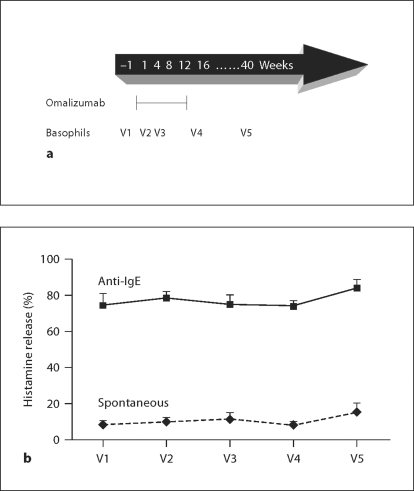Fig. 1.
Omalizumab does not reduce anti-IgE-stimulated histamine release. Percoll-enriched basophils from 15 volunteers were analyzed for basal and anti-IgE-stimulated histamine release over a 12-week course of omalizumab treatment and withdrawal. a The arrow shows when drug was first and last injected and when blood was taken for basophil purification and degranulation assays. Basophils were isolated before treatment (V1), at 2 weeks (V2) and 8 weeks (V3) after beginning treatment, within 2 weeks after the last treatment (V4) and 6 months after the last treatment (V5). b The graph shows histamine release ± SEM in the presence and absence of 1 μg/ml anti-IgE measured over 30 min as percent of total histamine content of the cells. Repeated measures ANOVA comparing between treatment groups found that anti-IgE-stimulated release is significantly higher than basal release under all treatment conditions (p < 0.001). There was no significant effect of omalizumab on anti-IgE-stimulated histamine release across the time course of omalizumab treatment and withdrawal.

